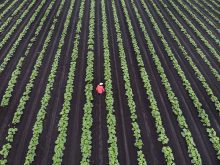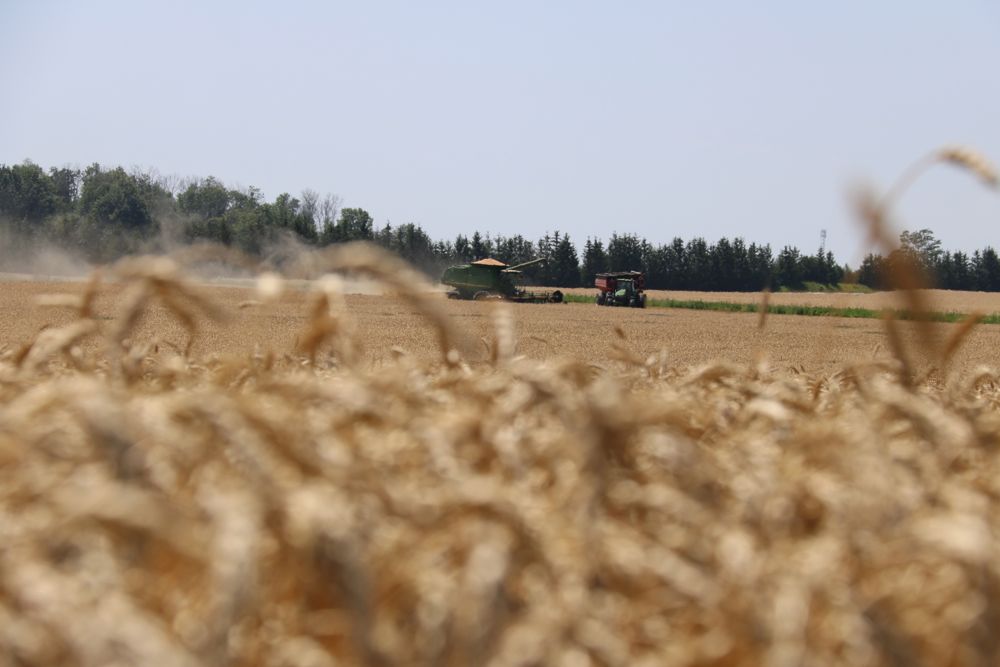For corn growers, winter is the season for pencilling out your costs, mapping out your rotations and evaluating any changes to your management system, all in preparation for the flood of work that the spring season brings.
For the 2012 planting season, however, many growers will be thinking of another kind of flood — the watery kind — and they will be remembering all those anxious days in 2011 as they prepare for corn planting.
By late May, most of us thought last year’s crop would be average at best, and we worried that with an early frost, even average might be too much to hope for.
Read Also

Could crop sharing be a viable option for your farm?
Crop sharing could be a good option for young and beginning farmers.
Then came the amazing August and the long, open September for a glorious late-season surge.
Can we plan on the surge again, or do we need to look for better ways to handle wet spring soils?
“It wasn’t their best crop, but in some cases, it was their second-best crop,” says John Waters, a certified crop adviser with Lakeside Grain and Feed Supply in Forest, Ont. “Guys who said they hoped they’d get 150 bushels per acre and be happy if it came in at less than 30 per cent moisture wound up getting 200 bushels per acre and 19 per cent.”
“When you think about it,” says Waters, “that’s really a testament to the new genetics.”
That’s the same message we’re hearing from researchers and extension personnel this winter. The 2011 growing season will likely be remembered best as one of those farming anomalies — a year when it seemed that growers could basically do no wrong, at least with their corn and soybean crops.
That’s not to say that growers found getting into the fields at harvest a simple matter. Above normal temperatures and a late frost effectively extended the growing season but heavy rains in the extreme southwest and in pockets elsewhere kept the crop in the field much longer than anyone wanted.
A wet spring ahead
Despite that better-than-expected harvest, and despite the relief that has come with historically strong crop prices, 2011 has left us the makings of a difficult 2012.
It can be summed up in two words — excess moisture.
Yes, growers had to suffer through late planting and poor emergence last year, but think how much worse it might have been if we had gone into 2011 with record levels of precipitation from the year before.
Weather INnovations (WIN) Incorporated, a weather monitoring and data gathering service based in Chatham, Ont., has issued its final tally for May 1 to Dec. 31, showing the Windsor-Essex region to be the hardest hit, with most of the county receiving at least 1,000 millimetres or essentially 40 inches of rain. Some parts were even wetter, getting soaked with closer to 50 inches.
And that was despite the June/July drought.
Concerns are already surfacing about the kinds of difficulties growers will face heading into the spring planting season with those saturated soils. Unless March and April are uncommonly dry, excessively wet fields seems likely to prove the norm, and growers will be challenged — again — getting their corn planted in the spring.
Worse compaction
For starters, compaction is likely to be a bigger issue this year than last, and at least for now, there aren’t any quick fixes.
“At this point, frost is the only thing that’s going to break up compaction,” says Waters. If they had been planted earlier, penetrating cover crops such as tillage radish could have helped fracture tough plow pans, but that option will not be available until the fall of 2012, Waters says. “Tillage radish isn’t cheap but it’s cheaper than driving a shank down 18 inches and possibly making things worse.”
The only real option for growers is to simply bide their time and wait until the ground is fit.
“In some of these fields that were soaked, and in marginal fields, they’re going to have to be very careful this spring, and it may be very prudent for them to wait,” says Allan Spicer, a certified crop adviser and marketing representative for Can Grow Crop Solutions. “There’s no question that there’s going to be some compaction (in 2012). The clay soils that drain very well, they’ll be fine. But if you have dense clay — the wrong type of clay — then yes, there are going to be problems.”
The tough question will be, how much can we get away with? In 2011, with all of the problems with the weather and a rushed planting season, there were incidents of sidewall smearing and “mudding-in” the crop. Yet the crop performed well.
Ken Currah, market development agronomist with Pride Seeds, says that attitudes and solutions in the field have changed in the past 20 years. Equipment now is far more precise and powerful, and more forgiving when soil or weather conditions aren’t so co-operative.
“We have a lot easier time making seed beds with the equipment options we have and with the horsepower we have today,” Currah says. “We can take a field that’s may be not quite ready to go, take tacky ground and make a seedbed out of it.”
In any presentation on high yields in any crop, Currah notes that the two hallmarks in the discussion are early planting and plant stand consistency with rapid, even emergence.
“That’s a difficult balancing act, but the bottom line is that you only get one chance to do it right, and if you look at last year, we had really limited root development,” says Currah, adding that many growers also learned what they can and cannot get away with in terms of fertilizer and herbicide applications.
In 2012, Currah says growers will need to pay closer attention to the kind of job they are doing with their cultivators and planters as conditions change, not just from field to field, but across the same field.
The wet diseases
For Albert Tenuta, the disease issues facing growers in 2012 are essentially the same that growers have been dealing with for the past five to 10 years, but with these weather conditions, we’re likely to see heavier pressure from all of the diseases that like wet soil environments, including the root rots and water moulds.
“The pythiums and phytophthoras that can affect both corn and soybeans are the ones that will thrive under those conditions,” says Tenuta, the field crops pathologist with the Ontario agriculture ministry. “Growers making their selections for those hybrids and varieties should be looking at resistance and tolerance levels, particularly for phytophthora root rot.”
As for the diseases that are increasing in Ontario, Tenuta says a lot of those are related to some of the recent changes in agricultural practices.
“What we’re seeing are diseases that are residue-borne, they survive longer, and have the ability to survive either in the soil or on residue,” Tenuta says. “These are the ear moulds, the residue-borne diseases in corn such as gray leaf spot, and Northern leaf blight that can survive either in the soil for a prolonged period of time or on residue.”
Other diseases that Tenuta has on his list include Goss’s wilt, which is beginning to move north from Indiana and Michigan (although it has yet to be found in Ohio). Gibberella ear rot could also become an issue again, although that won’t be known until later in the season.
The value of drainage
One of the fastest growing businesses related to agriculture in the past year is tile drainage.
Contractors are overbooked — some as much as 18 months in advance — and interest in the subject is at an all-time high. At the 2012 Southwest Agricultural Conference in Ridgetown, organizers were hoping to attract between 15 and 25 people to each session on how tile drainage pays. The first session on day one was standing room only, attracting roughly 90 people.
The second had nearly 120.
With land fetching more than $10,000 per acre in some regions and commodity prices at relatively stable levels, there is a growing incentive to improve land quality. Currah also notes that some growers are moving into second generation tiling, either replacing old tiles or increasing their frequency, from 60 feet to 30, or from 30 feet to 15.
Like corn farmers, however, the tilers will be looking for decent soil conditions. CG















